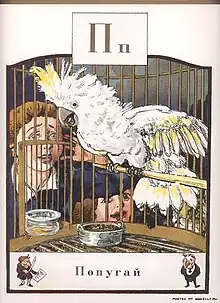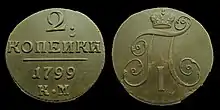Pe (Cyrillic)
Pe (П п; italics: П п) is a letter of the Cyrillic script.
| Cyrillic letter Pe | |||||||||||||||||||||||||||||||||||||||||||||||||||||||||||||||||||||||||||||||||||||||||||||||||||||||||||||||||||||||||||||||||||||||||||||||||||||||||||||||||||||||||||||||||||||||||||||||||||||||||||||||||
|---|---|---|---|---|---|---|---|---|---|---|---|---|---|---|---|---|---|---|---|---|---|---|---|---|---|---|---|---|---|---|---|---|---|---|---|---|---|---|---|---|---|---|---|---|---|---|---|---|---|---|---|---|---|---|---|---|---|---|---|---|---|---|---|---|---|---|---|---|---|---|---|---|---|---|---|---|---|---|---|---|---|---|---|---|---|---|---|---|---|---|---|---|---|---|---|---|---|---|---|---|---|---|---|---|---|---|---|---|---|---|---|---|---|---|---|---|---|---|---|---|---|---|---|---|---|---|---|---|---|---|---|---|---|---|---|---|---|---|---|---|---|---|---|---|---|---|---|---|---|---|---|---|---|---|---|---|---|---|---|---|---|---|---|---|---|---|---|---|---|---|---|---|---|---|---|---|---|---|---|---|---|---|---|---|---|---|---|---|---|---|---|---|---|---|---|---|---|---|---|---|---|---|---|---|---|---|---|---|---|
 | |||||||||||||||||||||||||||||||||||||||||||||||||||||||||||||||||||||||||||||||||||||||||||||||||||||||||||||||||||||||||||||||||||||||||||||||||||||||||||||||||||||||||||||||||||||||||||||||||||||||||||||||||
| Phonetic usage: | [p] | ||||||||||||||||||||||||||||||||||||||||||||||||||||||||||||||||||||||||||||||||||||||||||||||||||||||||||||||||||||||||||||||||||||||||||||||||||||||||||||||||||||||||||||||||||||||||||||||||||||||||||||||||
| Name: | покои | ||||||||||||||||||||||||||||||||||||||||||||||||||||||||||||||||||||||||||||||||||||||||||||||||||||||||||||||||||||||||||||||||||||||||||||||||||||||||||||||||||||||||||||||||||||||||||||||||||||||||||||||||
| Numeric value: | 80 | ||||||||||||||||||||||||||||||||||||||||||||||||||||||||||||||||||||||||||||||||||||||||||||||||||||||||||||||||||||||||||||||||||||||||||||||||||||||||||||||||||||||||||||||||||||||||||||||||||||||||||||||||
| Derived from: | Greek letter Pi (Π π) | ||||||||||||||||||||||||||||||||||||||||||||||||||||||||||||||||||||||||||||||||||||||||||||||||||||||||||||||||||||||||||||||||||||||||||||||||||||||||||||||||||||||||||||||||||||||||||||||||||||||||||||||||
| The Cyrillic script | |||||||||||||||||||||||||||||||||||||||||||||||||||||||||||||||||||||||||||||||||||||||||||||||||||||||||||||||||||||||||||||||||||||||||||||||||||||||||||||||||||||||||||||||||||||||||||||||||||||||||||||||||
| Slavic letters | |||||||||||||||||||||||||||||||||||||||||||||||||||||||||||||||||||||||||||||||||||||||||||||||||||||||||||||||||||||||||||||||||||||||||||||||||||||||||||||||||||||||||||||||||||||||||||||||||||||||||||||||||
| |||||||||||||||||||||||||||||||||||||||||||||||||||||||||||||||||||||||||||||||||||||||||||||||||||||||||||||||||||||||||||||||||||||||||||||||||||||||||||||||||||||||||||||||||||||||||||||||||||||||||||||||||
| Non-Slavic letters | |||||||||||||||||||||||||||||||||||||||||||||||||||||||||||||||||||||||||||||||||||||||||||||||||||||||||||||||||||||||||||||||||||||||||||||||||||||||||||||||||||||||||||||||||||||||||||||||||||||||||||||||||
| |||||||||||||||||||||||||||||||||||||||||||||||||||||||||||||||||||||||||||||||||||||||||||||||||||||||||||||||||||||||||||||||||||||||||||||||||||||||||||||||||||||||||||||||||||||||||||||||||||||||||||||||||
| Archaic or unused letters | |||||||||||||||||||||||||||||||||||||||||||||||||||||||||||||||||||||||||||||||||||||||||||||||||||||||||||||||||||||||||||||||||||||||||||||||||||||||||||||||||||||||||||||||||||||||||||||||||||||||||||||||||
| |||||||||||||||||||||||||||||||||||||||||||||||||||||||||||||||||||||||||||||||||||||||||||||||||||||||||||||||||||||||||||||||||||||||||||||||||||||||||||||||||||||||||||||||||||||||||||||||||||||||||||||||||
It commonly represents the unaspirated voiceless bilabial plosive /p/, like the pronunciation of ⟨p⟩ in "spin".
History
The Cyrillic letter Pe was derived from the Greek letter Pi (Π π).[1]

The name of Pe in the Early Cyrillic alphabet was покои (pokoi), meaning "peaceful state".[2]
In the Cyrillic numeral system, Pe had a value of 80.
Form
The capital Cyrillic letter Pe looks exactly like the Greek capital Pi from which it is derived, and small Pe looks like a smaller version of the same, though with a less prominent horizontal bar (Greek Π π > Cyrillic П п). Pe is not to be confused with the Cyrillic letter El (Л л; italics: Л л), which has a hook on its left leg in some fonts (in others El resembles the Greek Lambda (Λ)).
In italics and handwriting, capital Pe looks identical to the Greek capital Pi in these forms. The lowercase forms, however, differ among the languages that use the Cyrillic alphabet. Small italic Cyrillic Pe ⟨п⟩ in the majority of fonts or handwritten styles looks like the small italic Latin N ⟨n⟩. In handwritten Serbian, however, it appears as a Latin U ⟨u⟩ with a bar over it ⟨ū⟩.
Usage
As used in the alphabets of various languages, Pe represents the following sounds:
- voiceless bilabial plosive /p/, like the pronunciation of ⟨p⟩ in "pack"
- palatalized voiceless bilabial plosive /pʲ/
The pronunciations shown in the table are the primary ones for each language; for details consult the articles on the languages.
| Language | Position in alphabet | Pronunciation |
|---|---|---|
| Belarusian | 17th | /p/, /pʲ/ |
| Bulgarian | 16th | /p/, /pʲ/ |
| Macedonian | 20th | /p/ |
| Russian | 17th | /p/, /pʲ/ |
| Serbian | 19th | /p/ |
| Ukrainian | 20th | /p/, /pʲ/ |
| Kazakh | 22nd | /p/ |
| Abkhaz | 19th | /pʼ/ |
Related letters and other similar characters
- Π π : Greek letter Pi
- Ԥ ԥ : Cyrillic letter Pe with descender
- Ҧ ҧ : Cyrillic letter Pe with middle hook
- Л л : Cyrillic letter El
- N n : Latin letter N
- P p : Latin letter P
- Р р : Cyrillic letter Er
Computing codes
| Preview | П | п | ||
|---|---|---|---|---|
| Unicode name | CYRILLIC CAPITAL LETTER PE | CYRILLIC SMALL LETTER PE | ||
| Encodings | decimal | hex | dec | hex |
| Unicode | 1055 | U+041F | 1087 | U+043F |
| UTF-8 | 208 159 | D0 9F | 208 191 | D0 BF |
| Numeric character reference | П | П | п | п |
| Named character reference | П | п | ||
| KOI8-R and KOI8-U | 240 | F0 | 208 | D0 |
| Code page 855 | 221 | DD | 216 | D8 |
| Windows-1251 | 207 | CF | 239 | EF |
| ISO-8859-5 | 191 | BF | 223 | DF |
| Macintosh Cyrillic | 143 | 8F | 239 | EF |
External links
References
- Campbell, George L.; Moseley, Christopher (2013-05-07). The Routledge Handbook of Scripts and Alphabets. Routledge. ISBN 978-1-135-22296-3.
- Corbett, Professor Greville; Comrie, Professor Bernard (September 2003). The Slavonic Languages. Routledge. ISBN 978-1-136-86137-6.
